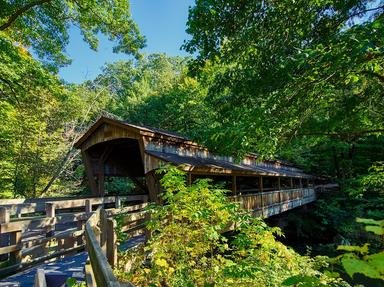Quiz Answer Key and Fun Facts
1. In which year was the city of Akron founded?
2. Akron was founded by whom?
3. What is the meaning of the name "Akron"?
4. Eliakim Crosby platted a second Akron just north of the first town. What was the original name of this second Akron?
5. What was the principal business street of Akron from its incorporation through the boom period of the early 1900s?
6. Who was Akron's first mayor?
7. When founded, Akron was part of Portage County. But what township was it in?
8. A triangular piece of unplatted land created by the uneven tilt of the two original Akrons was known by what name?
9. Which of these famous people spent time in Akron?
10. Akron has many distinct neighborhoods. The old neighborhood along South Street near Grant Street was called what?
11. Akron's most famous industry was rubber manufacturing. What other industry was prevalent in Akron's early years?
12. In 1851 a Women's Convention met at the Old Stone Church in Akron, where a now famous speech entitled "Ain't I a Woman?" was given by whom?
13. Who is credited with the push to create Akron Rural Cemetery, now Glendale Cemetery?
14. Which of the following 'trees' is NOT represented among Akron street names?
15. What is odd about Akron's "East Ave."
Source: Author
Azazella
This quiz was reviewed by FunTrivia editor
minch before going online.
Any errors found in FunTrivia content are routinely corrected through our feedback system.
